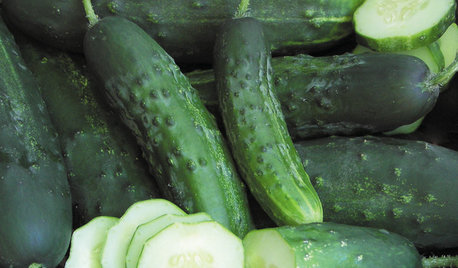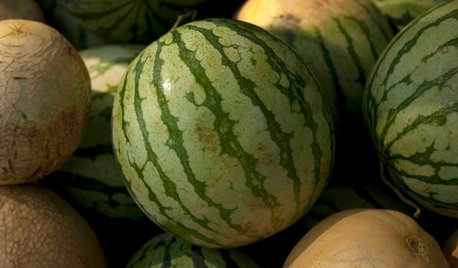Growing squash in spite of cucumber beetles?
dougdecinces
11 years ago
Related Stories

SUMMER FRUITS AND VEGETABLESSummer Crops: How to Grow Cucumbers
Pick a peck for pickles or opt for fewer and raw — no matter how you slice them, cucumbers are great for summer gardens small to large
Full Story
EDIBLE GARDENSSummer Crops: How to Grow Squash
Almost foolproof and with cheerful flowers, squash comes in a wide range of varieties to plant in spring
Full Story
EDIBLE GARDENSSummer Crops: How to Grow Pumpkins
Start in spring to grow your own fall decorations and have plenty left for pies
Full Story
EDIBLE GARDENSHouzz Call: What Did You Grow This Summer?
Let’s celebrate the homegrown fruits and vegetables of the season. Post your pictures and tell us about your harvest
Full Story
GARDENING GUIDESSummer Crops: How to Grow Melons
Drink in the refreshing sweetness of melons from your own garden this summer — they can last well into fall too
Full Story
EDIBLE GARDENSSummer Crops: How to Grow Watermelons
You might not need as much space as you think to get this summer mainstay to spring up in your garden
Full Story
EDIBLE GARDENSGarden BFFs? Why Your Vegetables Are Begging for Companion Plants
Foster friendships among plants for protection from pests, pollination support and color camaraderie
Full Story
GARDENING GUIDES6 Plants That Beat Butterfly Bush for the Wildlife Draw
It's invasive, a nonnative and a poor insect magnet. Check out these better alternatives to butterfly bush in the garden
Full Story
GARDENING GUIDESOrganic Matters: Thwart Insect Pests With Trap Crops
Add a few sacrificial plants to your garden to lure insects away from the harvest
Full Story
FRONT YARD IDEAS12 Surprising Features Found in Front Yards
Fire, water, edibles and wildlife habitats are just a few of the elements you can consider adding to your entryway landscape
Full StoryMore Discussions






ruthieg__tx
digdirt2
Related Professionals
Leawood Landscape Architects & Landscape Designers · Boca Raton Landscape Contractors · Gallatin Landscape Contractors · Lake Worth Landscape Contractors · Mahwah Landscape Contractors · New Cassel Landscape Contractors · North Richland Hills Landscape Contractors · Palm Beach Gardens Landscape Contractors · Raleigh Landscape Contractors · Royal Oak Landscape Contractors · South Portland Landscape Contractors · Tigard Landscape Contractors · Albany Driveway Installation & Maintenance · Leesburg Driveway Installation & Maintenance · Thornton Driveway Installation & Maintenancefcc0
bomber095
little_minnie
japus
nc_crn
dougdecincesOriginal Author
planatus
japus
little_minnie
jrslick (North Central Kansas, Zone 5B)
zzita
sweetquietplace
flowergirl70ks
ltilton
NilaJones
bluebirdie
NilaJones
little_minnie
chervil2
weedlady
edweather USDA 9a, HZ 9, Sunset 28
flowergirl70ks
weedlady
adc14
japus
greenmulberry
japus
Josee Gagne
fcc0